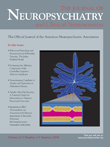Improvement in Pisa Syndrome and Tardive Dyskinesia Following Aripiprazole Treatment
To the Editor: Tardive dystonia and tardive dyskinesia, parts of a group of delayed-onset neuroleptic-induced movement disorders, may coexist but are postulated to be different in prevalence, demographic profiles, clinical presentations, and to have different neurochemical mechanisms. 1 Drug-induced Pisa syndrome, manifesting as a tonic lateral flexion of trunk after exposure to neuroleptics, consists of both acute and persistent types. Thus, Pisa syndrome can also be viewed as an atypical subtype of tardive dystonia. 1 , 2 Aripiprazole exerts a therapeutic effect by partial D2 agonism rather than D2 receptor blockage, 3 implying its possibly beneficial effect to delayed-onset extrapyramidal symptoms. Previous reports often focused on the issue relevant to either one of the tardive syndromes. We report on a patient whose Pisa syndrome and tardive dyskinesia were improved following aripiprazole treatment.
Case Report
Ms. Y, a 31-year-old schizophrenia patient (DSM-IV criteria), had psychotic symptoms onset at the age of 20. Her symptoms were rapidly alleviated after 6 months of sulpiride therapy with trihexyphenidyl. She had received treatment with trifluoperazine, haloperidol, clotiapine, and zotepine in the following years for intermittent relapsing symptoms. Oral-buccal-lingual dyskinesia was first noticed after she had been treated with risperidone for 2 years. Her antipsychotic was then switched to olanzapine. Moreover, she developed left-tilting of her trunk and right-sided rotation of her neck with subjective stiffness in her chin and shoulders during olanzapine treatment. A diagnosis of tardive dystonia was made according to Burke and colleagues’ criteria. 4 Her dystonic reaction showed no improvement after high-dose anticholinergic medication (biperiden, 8 mg) was added on and olanzapine was withdrawn. Lingual dyskinesia was partially ameliorated after replacement of olanzapine by amisulpride for 2 months, but Pisa syndrome did not improve. Eventually, aripiprazole and amantadine were substituted for amisulpride and biperiden, respectively. Tardive dyskinesia disappeared in one month, and Pisa syndrome was improved significantly after 2 months’ administration of aripiprazole, 30 mg/day, and amantadine, 200 mg/day.
Discussion
Despite the sharing dopamine blockade in the pathogenesis of Pisa syndrome and tardive dyskinesia, cholinergic-dopaminergic imbalance may better account for the former whereas dopamine receptor hypersensitivity may account for the latter. 2 Our patient developed persistent motor symptoms insidiously after long-term conventional and atypical antipsychotics, which excluded an acute tonic reaction. 2 This patient’s tardive syndromes were neither resolved by withdrawal of olanzapine (a multi-acting receptor-targeted antipsychotic with high 5HT2/D2 ratio), nor treatment of amisulpride (a D2/D3 receptor antagonist with high D3/D2 ratio). 3 Unlike other atypical antipsychotics, aripiprazole shows higher affinity at D2 receptors than at 5-HT2 receptors, and its weak partial 5HT 1A agonism is demonstrated in a recent study. 5 Thus, aripiprazole successfully improved both tardive dyskinesia and Pisa syndromes, possibly because it can reverse D2 receptor hypersensitivity and restore cholinergic-dopaminergic balance via D2 partial agonism. As for amantadine, there has been no substantial evidence regarding its effect on treating tardive dystonia. The role played by amantadine in this patient was unclear.
In summary, we suggest that aripiprazole is a potential drug for the management of Pisa syndrome coexistent with tardive dyskinesia. Aripiprazole is also a drug candidate to study the differential neurochemical mechanism of various subtypes of tardive syndromes.
1. Adityanjee, Aderibigbe YA, Jampala VC, et al: The current status of tardive dystonia. Biol Psychiatry 1999; 45:715–730Google Scholar
2. Suzuki T, Matsuzaka H: Drug-induced Pisa syndrome (pleurothotonus): epidemiology and management. CNS Drugs 2002; 16:165–174Google Scholar
3. Horacek J, Bubenikova-Valesova V, Kopecek M, et al: Mechanism of action of atypical antipsychotic drugs and the neurobiology of schizophrenia. CNS Drugs 2006; 20:389–409Google Scholar
4. Burke RE, Fahn S, Jankovic J, et al: Tardive dystonia: late-onset and persistent dystonia caused by antipsychotic drugs. Neurology 1982; 32:1335–1346Google Scholar
5. Mamo D, Graff A, Mizrahi R, et al: Differential effects of aripiprazole on D(2), 5-HT(2), and 5-HT(1A) receptor occupancy in patients with schizophrenia: a triple tracer PET study. Am J Psychiatry 2007; 164:1411–1417Google Scholar



